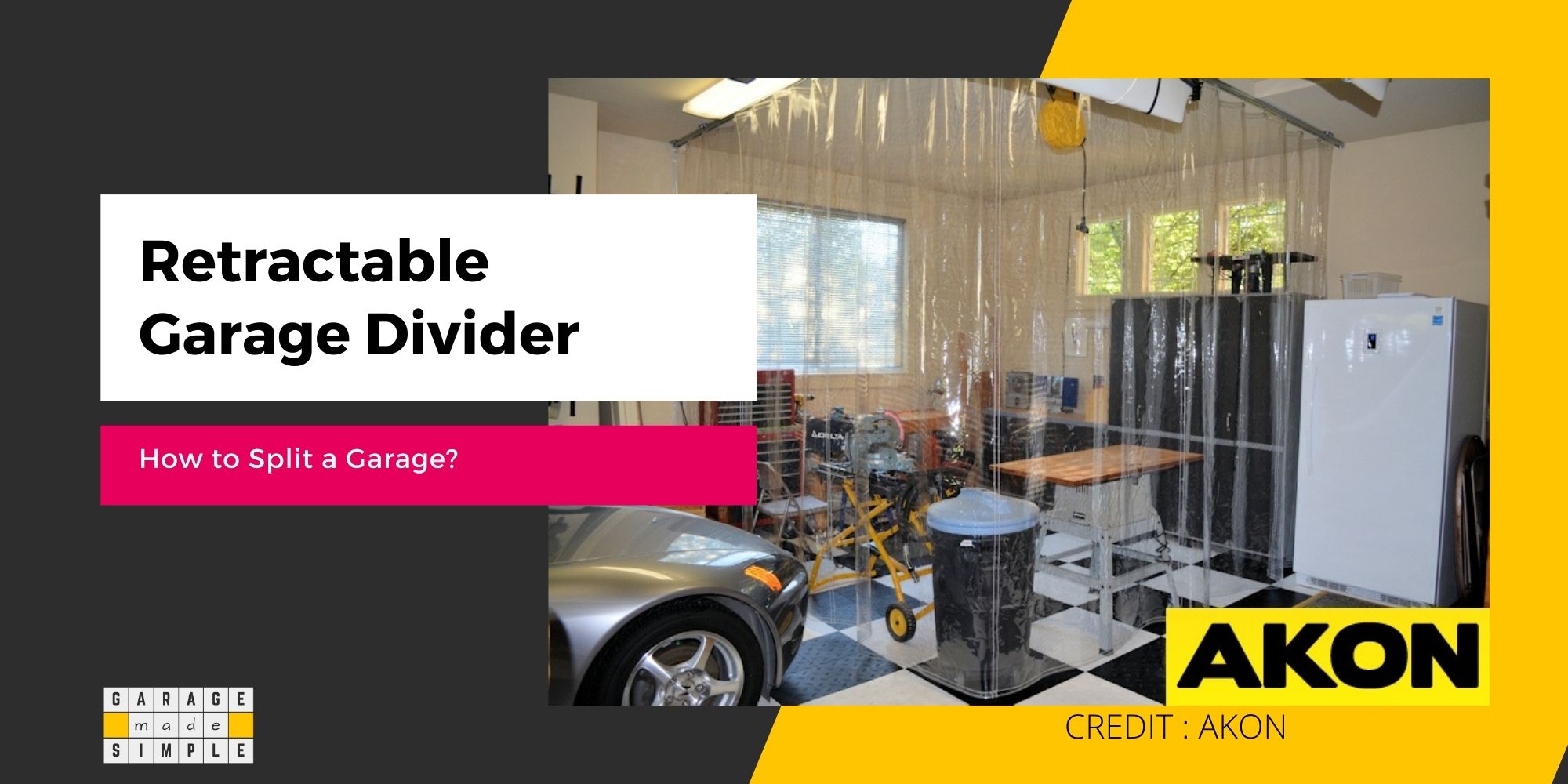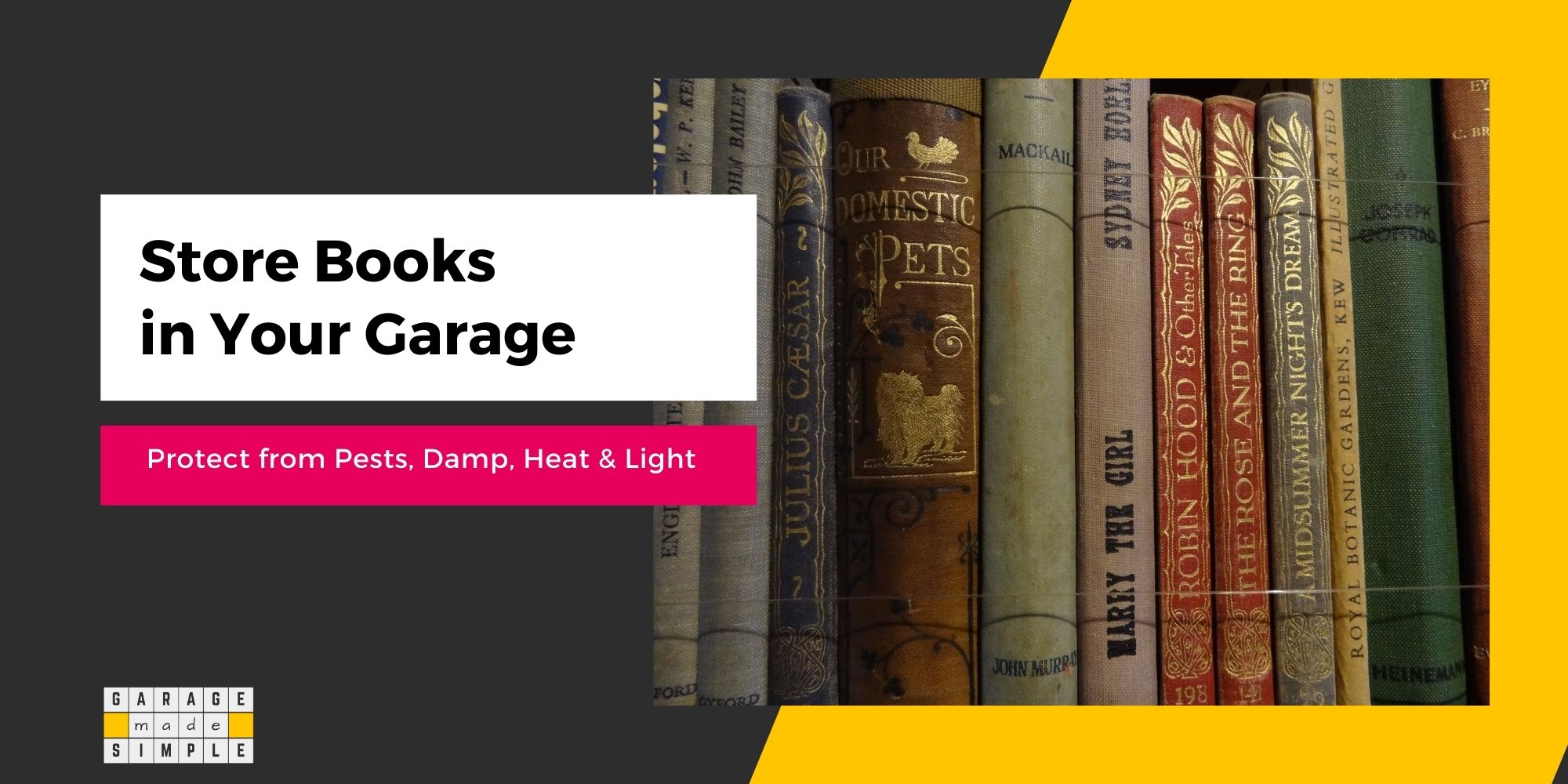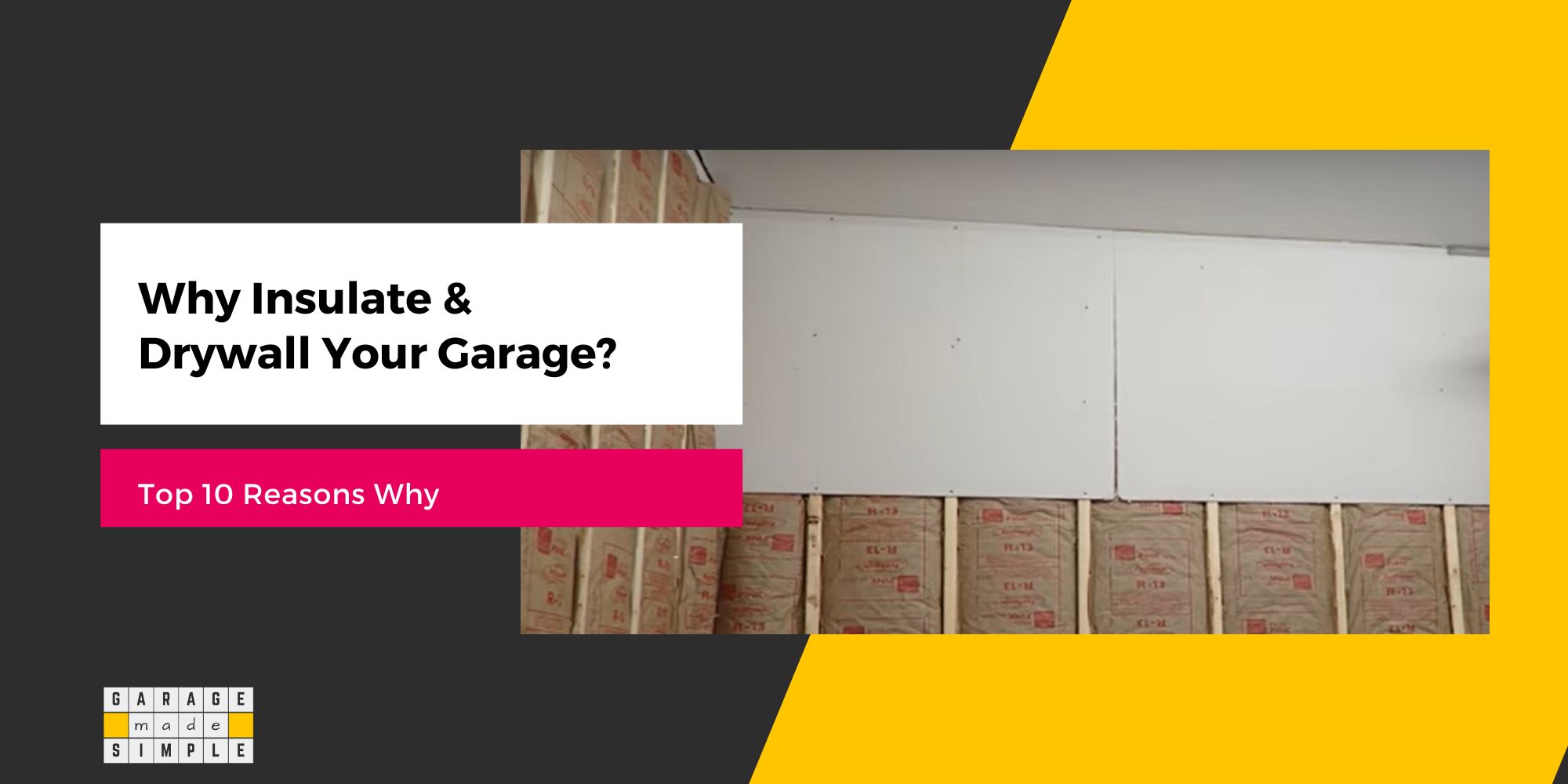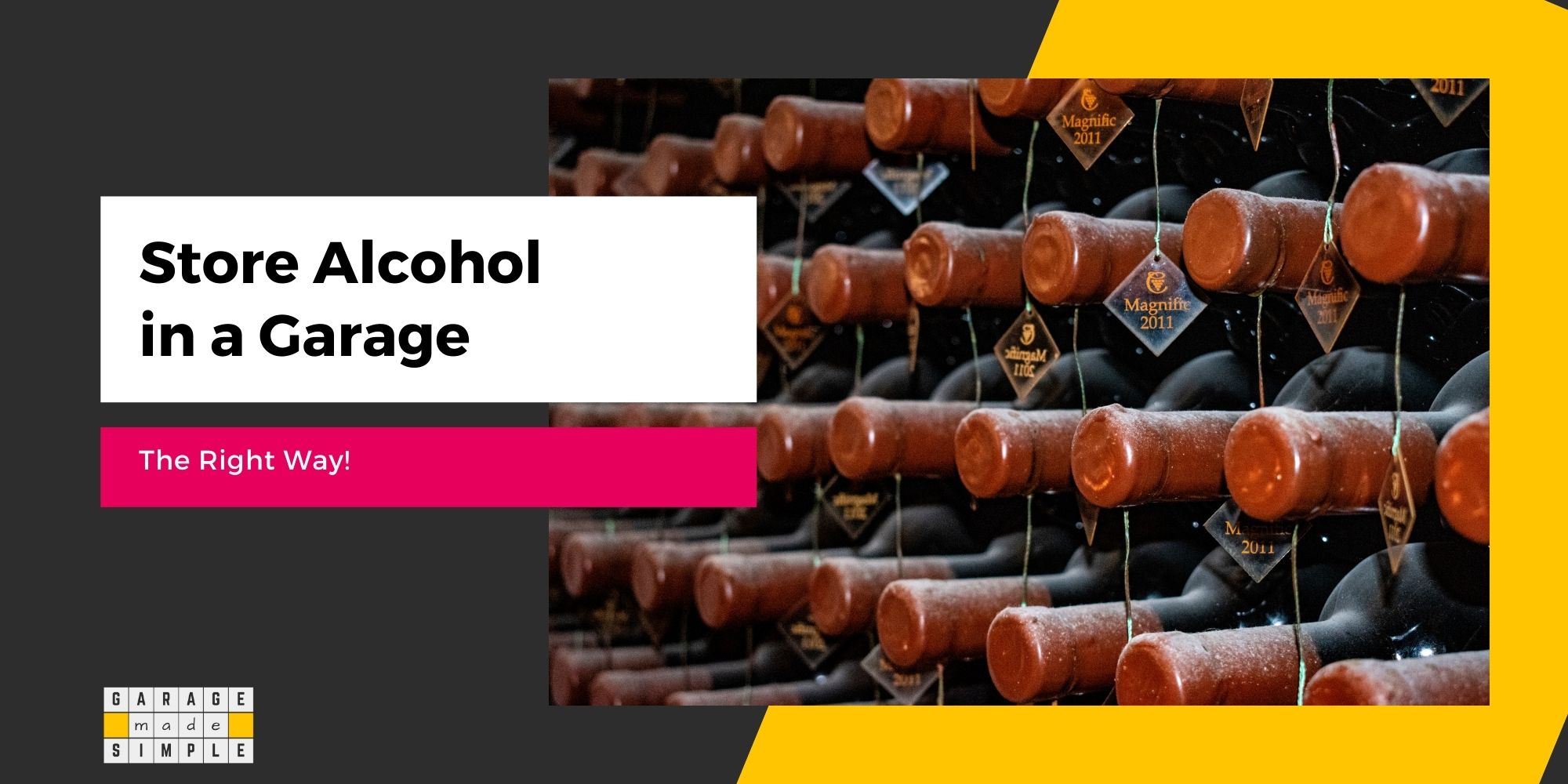Insulating Garage Walls: 11 Important Reasons It Makes Sense!
garagemadesimple.com is a participant in the Amazon Services LLC Associates Program, an affiliate advertising program designed to provide a means for sites to earn advertising fees by advertising and linking to Amazon.com . The website is also an affiliate of a few other brands.
Advantages of Insulating Garage Walls
Why should you be insulating garage walls? Quite often a garage door is insulated but the garage walls are not. Actually this does not make much sense. The door is only one side of the garage; the walls are the other three sides. You will be losing heat through them. So should you insulate the walls of your garage?
Here are the 11 important reasons for insulating garage walls:
- Reducing Energy Costs
- Making the Garage more Comfortable
- Prolonging the Life of your Cars
- Preventing Damage to Stored Items
- Keeping Adjoining Rooms Warmer
- Soundproofing the House
- Reducing Humidity & Condensation
- Preventing Ice forming on Garage Floor
- Ensuring Water Pipes do not Freeze
- Improving Safety
- Adding to Value of the House
TIP: You can even insulate a finished garage without removing the drywall. Read my blog post How to Insulate a Finished Garage? What you Need to Know! for details.
So let me explain each of the benefits in some more detail.
Reducing Energy Costs
U.S. households need energy to power numerous home devices and equipment, but on average, more than half (51% in 2015) of a household’s annual energy consumption is for just two energy end uses: space heating and air conditioning.
Source: eia.gov
You would like the temperature within your living and working space to be around 75 deg F, irrespective of whether it is 10 deg F or 100 deg F outside.
Heating or Cooling the house is the way to get this ideal temperature. Once achieved, insulation is going to make it easier to maintain it.
You will need less energy by insulating garage walls as it helps you retain the heat (in winter) or stops the heat from entering (in summer). Less energy used equals reduced energy costs.
Making the Garage more Comfortable
I spend quite some time in my garage. I guess you do too!
Most homeowners use their garage for some activity. Working on your car or other DIY projects in the garage is a favorite.
You really want to finish the woodworking project this weekend. But if the garage is too cold, the project gets postponed every weekend. The November project ends up getting done in May!
Did you again skip the workout in your garage gym because it was too hot or your yoga practice because the garage was too cold.
And anyway how can you chill in your garage sipping on a glass of wine iif the garage is uncomfortably hot. Not me.
Insulated garage walls are a part of a climate controlled garage and will go a long way in letting you use your garage in comfort.
Prolonging the Life of your Cars
It’s not just you. Your car does not like being parked in a very hot or for that matter a very cold garage. Extreme temperatures affect the car’s performance, some parts may deteriorate faster and the life of the car will come down.
Hot weather is not good for your car battery. The vital liquids inside evaporate faster and the internal components corrode.
Heat is also detrimental to composites, increasingly used in today’s automobiles. The resins and glue holding the laminations break down faster in heat.
The viscosity of engine oil and lubes drops when temperatures rise. The result increased friction between moving parts.
Tires and paint will also have a shorter life in hot garages, though to be honest it’s the UV radiation from the sun which is the real culprit.
Extreme cold affects cars in a different way. They will be covered in snow and ice even in the garage. The salt in the deicing chemicals along with water will increase the risk of rust & corrosion.
It is also a lot more difficult to get a car started in the morning when the car has spent the night in a really cold garage.
Preventing Damage to Stored Items
Many of the items that you store in your garage are sensitive to extreme temperature. Many items will say “store in a cool, dry place”. So obviously an uninsulated garage is not the place to keep them.
Paint for example can not be stored in a hot garage. It will just gel and be completely unusable when you open the can.
Most importantly many sports equipment and outdoor gear use composites.
For example your garage is an ideal place to keep your fishing gear. However, fishing rods are made from fiberglass, graphite or composites, which have a lower life if they are stored in hot, humid conditions.
The same logic applies to other equipment like golf clubs, jet skis, surfboards and ATV.
Keeping Adjoining Rooms Warmer
By insulating garage walls you are also ensuring that the room adjacent to the garage stays warmer. This is very important if the adjoining room is the living room , as is often the case.
Soundproofing the House
Insulating material usually absorbs sound very well. So by insulating garage walls you are also insulating your house from any sounds from the garage. Your family will not be disturbed when you are working on the bench table saw in your garage.
Reducing Humidity & Condensation
Insulation of garage walls, just like insulation of garage floors helps in reducing humidity & condensation.
Preventing Ice forming on Garage Floor
In winters, there is a high chance that the snow the car brings in will form a pool of water on the garage floor. If the garage is not well insulated (and that includes insulation of garage walls) then the water on the floor can freeze to ice. This is a safety hazard.
Ensuring Water Pipes do not Freeze
Do you have water pipes running through the garage? In freezing winters, they may freeze and burst if your garage and the garage walls are not well insulated.
Improving Safety
Garage wall insulation should be fire rated. So insulating garage walls also gives you the opportunity to sheath any electrical wiring and conduits within the insulation and behind a drywall.
Adding to Value of the House
Any realtor will tell you that a completely insulated garage will increase the value of your house if it is located in a region which has harsh winters. This means insulating the entire garage including the garage walls.
What Type of Insulation Is Best for Garage Walls?
The common materials used for insulating garage walls that are still unfinished are
Insulation Batts or Rolls
Insulation Batts can be made from any insulating material. Typically they use fiberglass but other types of material such as cellulose, mineral wool or natural fibers can also be used.
Standard fiberglass batts have R-values ranging from R-2.9 to R-3.8 for every inch of thickness. R-15 Fiberglass insulation batts or rolls are your best option.
Owens Corning R 15 Kraft Faced Fiberglass Batt Fits 2X4 Stud Walls
Owens Corning 678 SQFT 10 Bags of R 15 Kraft Faced 15 by 93 Fiberglass Batt Fits 2X4 Walls
Owens Corning EcoTouch PINK Fiberglass Insulation with PureFiber Technology is a preformed, flexible blanket insulation. It is produced in R-values from 11 to 49, with thicknesses ranging from 31/2 inches to 14 inches. It is available unfaced, or faced with either a kraft or foil vapor retarder.
Kraft Facing is a Paper Backing on Insulation. This Backing Provides a Moisure Barrier/Retardent, Required in Exterior Walls. Faced Materials can be Used in Any Application for Exterior Walls, Interior Walls, Ceiling, Floors, Cathedral Ceilings, and Attic
Fiberglass is a skin and lung irritant, so always wear protective eyewear, gloves, masks and clothing when working with fiberglass insulation.
Insulation Rolls are basically Batts in rolls that have pre-cut widths to fit between studs and joists. The Rolls come in continuous lengths ranging from 20- to 40-feet.
Owens Corning R-13 Pink Kraft Faced Fiberglass Insulation Roll
Owens Corning R-13 Pink Kraft Faced Fiberglass Insulation Roll
Soft to the touch and easy to cut and install, Owens Corning insulation has a strong reputation with home builders for delivering performance you can trust.
The higher the R-value, the greater the insulating power. Owens Corning PINK Fiberglas insulation supports a comfortable, quiet and healthy home. Formaldehyde-free and meets GREENGUARD standards for indoor air quality.
Fire Resistant Rigid Foam Boards
Fire Resistant Rigid Foam Boards are rigid panels usually made out of
- Expanded Polystyrene (Styrofoam) – R-values that range from 3.6 to 4.2 per inch
- Extruded Polystyrene – R-values of around 5.0 per inch
- Polyisocyanurate – R-values that range from 6.0 to 6.5 per inch
For residential garage walls Styrofoam Insulation Boards are usually good enough. They are pretty easy to install too.
The safety requirements during installation are much lower than fiberglass batts or rolls.
For the best in this category check out ROCKWOOL COMFORTBATT
COMFORTBATT® is a stone wool insulation product for use in wood and steel framing in both new residential and commercial builds and renovations. This semi-rigid batt has a unique flexible edge designed to compress as the batt is inserted into walls, attics, ceilings and floor frames.
Now, get all the premium benefits of ROCKWOOL stone wool insulation
in R13, R21, and R38 thermal values.
Fire Resistance: Please note that both Fiberglass and Mineral Wool are fire resistant and will not burn. However, backing such as paper, foil etc. and the wood studs & joists are not fire resistant and can burn.
Spray Foam Insulation
Spray Foam Insulation is created by injecting two liquid chemicals from a spray gun which react to form a foam. The foam expands rapidly and will fill up every nook & cranny. It then hardens to create a very strong air barrier.
Spray Foam Insulation is extremely energy efficient. However, in my opinion, it is an overkill for a garage wall.
How to Insulate a Garage Wall?
If you have sufficient expertise & experience in completing DIY projects, then you will be able to insulate your garage walls quite easily. The process is quite similar whether you use Insulation Batts or Insulation Foam Boards.
So I won’t bore you with a step by step guide. The official video below, from Owens Corning is quite clear.
The next video is the official video from Rockwool, which is also equally clear.
Bottom Line
The bottom line is that if you want your garage to be fully insulated and climate controlled, then just insulating the garage door is not enough. The floor & the ceiling needs to be insulated too.
And most importantly the garage walls need to be insulated.
Insulating the garage will benefit you by
- Reducing Energy Costs
- Making the Garage more Comfortable
- Prolonging the Life of your Cars
- Preventing Damage to Stored Items
- Reducing Humidity & Condensation
- Keeping Adjoining Rooms Warmer
- Soundproofing the House
- Preventing Ice forming on Garage Floor
- Ensuring Water Pipes do not Freeze
- Improving Safety
- Adding to Value of the House
Thank you very much for reading the post. I do hope you found it informative and useful.








